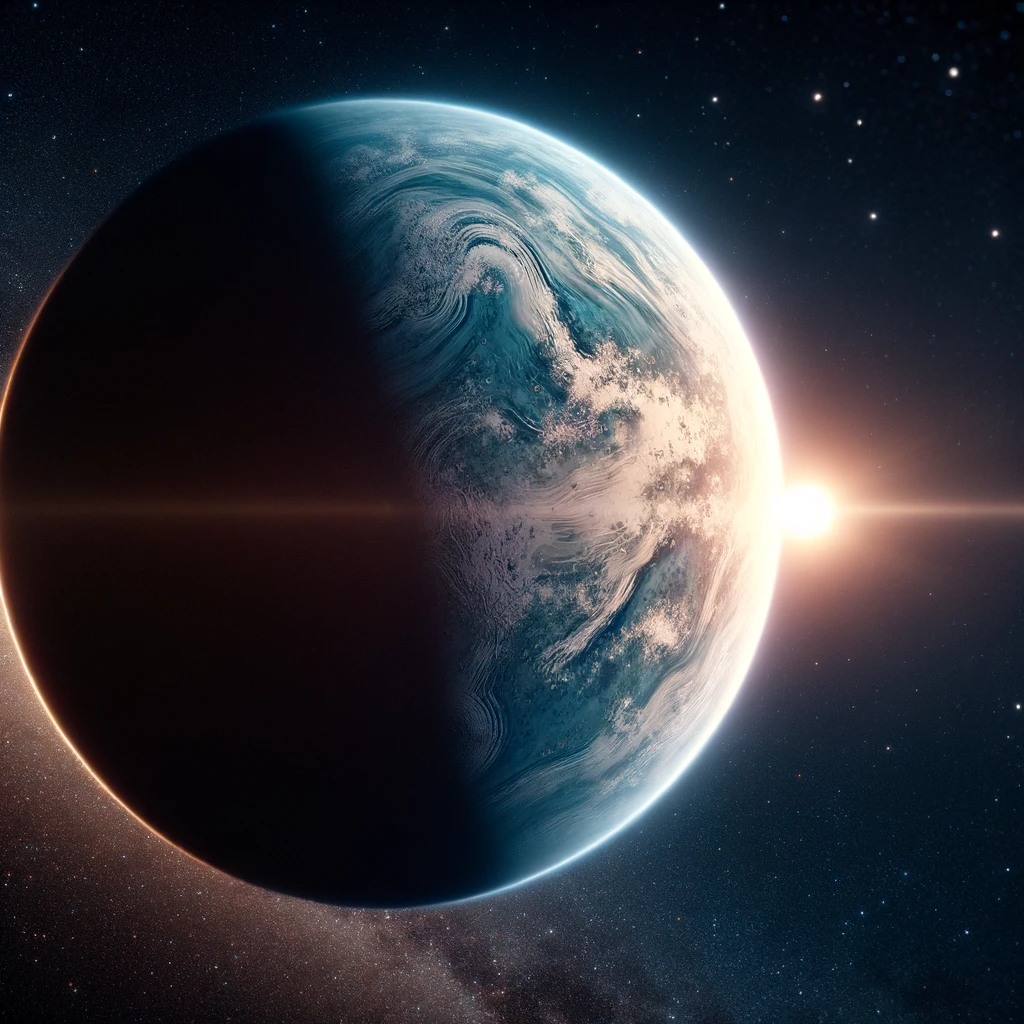In a remarkable discovery published by the European Space Agency (ESA) on their website, esa.int, astronomers using the Hubble Space Telescope made a groundbreaking discovery. They observed water vapor in the atmosphere of the exoplanet GJ 9827d, which is only about twice the diameter of Earth. This observation marks a significant leap in our efforts to understand the diversity of planetary atmospheres beyond our solar system. GJ 9827d, though small compared to the gas giants of our own solar system, presents an interesting case. “Imagine a world not much larger than our own, but its sky tells a story of water, the elixir of life as we know it,” said Björn Benneke from the Université de Montréal, a key member of the observing team.
This discovery is not just about finding water; it’s about uncovering the secrets of planetary atmospheres in the universe. The planet orbits its star at a scorching temperature, similar to Venus, with surface conditions far too extreme for life as we know it. Yet, the mere presence of water vapor suggests the planet’s past, perhaps as a mini-Neptune or a rocky world shrouded in steam. “It’s like looking into the planet’s history, trying to decipher its past and the journey it has taken through space,” explained Pierre-Alexis Roy, the lead author of the study.
This discovery opens new paths for exploration, especially with the upcoming James Webb Space Telescope, which will delve deeper into the mysteries of GJ 9827d’s atmosphere. The effort to understand the diversity of planets in our galaxy continues, with each discovery bringing us closer to answering the age-old question: Are we alone in the universe? As we stand on the threshold of new discoveries, the story of GJ 9827d serves as a reminder of the wonders that await us in the cosmos. It’s a testament to human curiosity and our endless quest to understand the universe and our place in it.
This article was generated using ChatGPT-4, an artificial intelligence model developed by OpenAI, with input from an article on esa.int and a request to process it in a popular science format for the general public (internet users, not scientists).

What is the Hubble Telescope?
The space telescope is one of the most powerful tools for observing the universe, launched into Earth’s orbit in 1990. Since then, it has provided astronomers with an unprecedented view of the universe, from the nearest neighbors in our solar system to the most distant galaxies at the edge of the observable universe. Thanks to its ability to observe in various wavelengths, Hubble can study a wide range of astronomical phenomena.
Exoplanets and Their Significance
Exoplanets are planets orbiting stars other than our Sun. The discovery of these worlds has expanded our understanding of what planetary systems can look like and operate. Studying their atmospheres, especially the detection of molecules like water vapor, is crucial for understanding their composition, climate, and potential habitability.
The Significance of Water Vapor
Water vapor is significant not only because it is a basic prerequisite for life on Earth but also because its presence in an exoplanet’s atmosphere can provide important information about temperature, pressure, and overall atmospheric composition. Water vapor plays a key role in atmospheric processes such as cloud formation and precipitation, as well as in regulating climate through the greenhouse effect.
The Transit Method
The transit method, used to detect water vapor on the exoplanet GJ 9827d, involves observing the decrease in brightness of a star as a planet passes between the star and the observer on Earth. During this transit, some of the starlight passes through the planet’s atmosphere, allowing for the detection and analysis of molecules in the atmosphere based on absorption lines in the starlight spectrum.
Future Surveys
Further observations, such as those with the James Webb Telescope, will allow us to obtain even more detailed views of the atmosphere of GJ 9827d and other exoplanets. These advanced telescopes can identify additional molecules and potential chemical signatures of life, expanding our understanding of planetary atmospheres and conditions for life in the universe.
Conclusion
The discovery of water vapor on the exoplanet GJ 9827d represents a significant step forward in our understanding of the universe. This discovery, along with future observations, may provide us with valuable information on how often water-rich planetary atmospheres occur and what the chances are for finding habitable worlds beyond our solar system.
